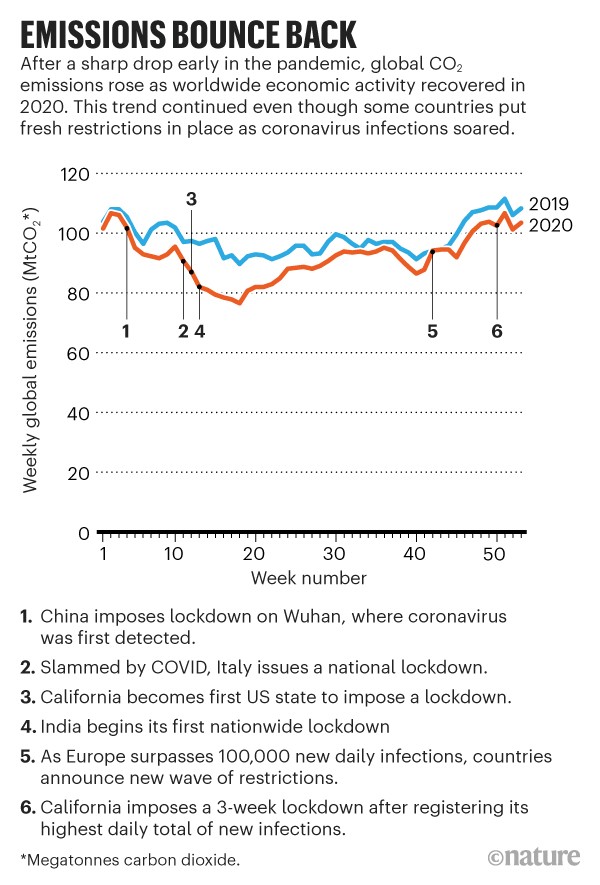One year into shelter-in-place due to Covid-19, we’ve experienced a fundamental shift in the way we live our lives. For many, this has included working from home—leading to less flying and commuting (my commute from the bedroom to the living room is more or less emissions free).
In 2020, global greenhouse emissions fell by 6.4%; in the US, they fell by a whopping 13%. Yet these reductions cannot be interpreted as a climate solution. A one-off year of lower emissions is a microscopic blip when it comes to necessary reductions.
To put 6.4% in context, year-on-year global emissions reductions of 7.5% are required to avoid 1.5C of warming and the most serious consequences of climate disruption. If we were to maintain 2020-level emissions reductions over the next decade, globally, we would be nearly on track to avoiding 1.5C.
But as we all know and feel deeply, having lived through the past year, a pandemic is not a climate solution. We’ve just had a taste of what it would take to reduce emissions via individual actions alone--and it’s not sustainable.
So how do we reduce emissions to avoid catastrophic climate change without going insane?
The answer is simple--climate change isn’t an individual problem, it’s a collective one. Anyone who tells you that individual actions are enough is parroting the fossil fuel industry’s obstructionist talking points. Not that we shouldn’t take actions where we can (I am a vegetarian and drive a plug-in hybrid vehicle) but rather, as 2020 showed us, the nature of individual actions that would be required comprise totally unrealistic expectations of what we as humans are able to sacrifice.
Meanwhile, nearly half of emissions in the US come from electricity production and industrial sources.
The Biden Administration has launched an ambitious climate agenda; yet, tallying up the related emissions reductions, we are still faced with a carbon ‘gap’ between where we need to be and where we are. Nevertheless, real climate solutions do exist, right here, right now. They’re being articulated by young people, unions, and frontline communities, and even made their way into a House Resolution in 2019.
Collectively they are understood as a green recovery, a just transition or the Green New Deal. Together these prioritize systemic economic recovery, not by building back the same systems that created the mess in the first place, but instead by investing directly in communities and creating jobs to build the sustainable infrastructure that will phase out fossil fuels, increase resilience to climate impacts, and build out already low-carbon sectors of the economy.
We cannot go “back to normal” after Covid-19. In May, the International Energy Agency warned that the economic rebound post-pandemic could result in even higher emissions than pre-pandemic.
Looking at current data it seems that emissions bounce-back is already happening.
As our frontline allies have made clear, “back to normal” perpetuates violence against and marginalization of people of color, “normal” entrenches skyrocketing wealth inequalities, and “normal” continues sacrificing communities of color for expansion of fossil fuel infrastructure. Coming out of the worst global pandemic of the past century, we have a choice to make: return to that “normal” or build back fossil free.
And when it comes to climate, this may be our last chance to make the right choice. To learn more about the push to build back fossil free, visit:
https://buildbackfossilfree.org
Editor’s note: Emily Williams is a PhD candidate in Geography at UC Santa Barbara, a climate justice activist and scholar.
